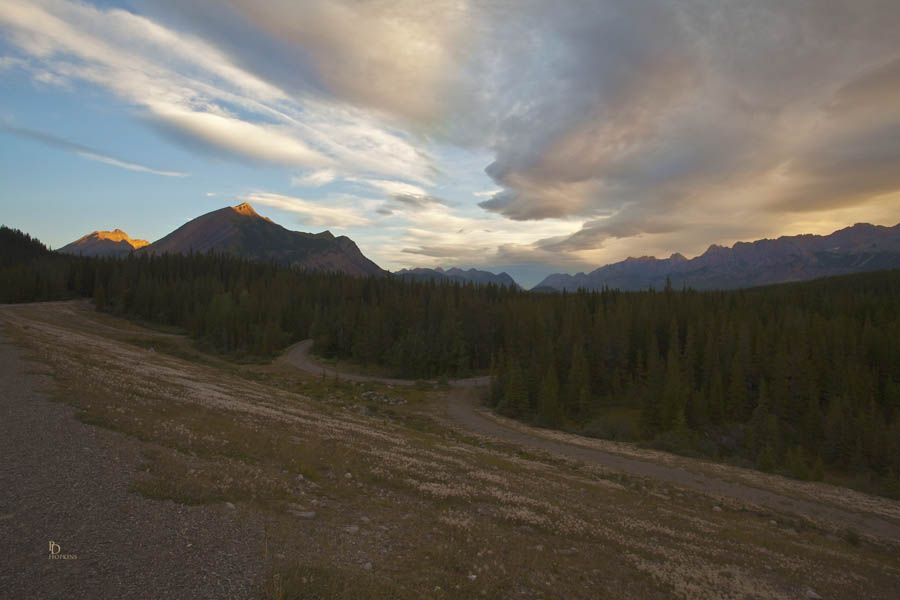I occasionally look back through the archives and quite often find pictures that I had initially overlooked. Today, I’m posting a shot that has some interesting elements, notably the clouds but it did not catch my eye when I first looked at it back in August. I now realize that it looked a little drab because I did not achieve the correct white balance when I took the picture. I used the auto white balance setting (AWB), which usually gets it right, but not always. This is one such case. I was able to make it more appealing and more true to what I saw by correcting the white balance in Photoshop. (If you would like to know more about white balance, I’ve included a brief description at the end of the post.)
Here’s the photo, taken in August at the Upper Kananaskis Lakes. I was facing away from the lake, interested in the effect of the rising sun on the beautiful cloud patterns to the north. I also like the glow of the sunrise on the tips of the peaks, particularly on the right where it is more subtle than on the two peaks on the left.

The photo was taken in the early morning light. The aperture setting was f16, exposure compensation setting was -0.67 and the ISO setting 400, resulting in a shutter speed of 1/20 sec. With this relatively slow shutter speed, I used a tripod to steady the camera and ensure the sharpest possible image. I used a wide angle lens, Canon EF17-40mm f/4, wide open at a focal length of 17.0 mm. to take in as much of the landscape as possible. White balance was set using AWB and as mentioned earlier, I subsequently increased the white balance to 7500 deg K to produce the desired “warmth”. The aperture setting of f16 is quite small which has the effect of slowing down the exposure, making the tripod necessary. The reason for doing it is to increase the depth of field, allowing better focus throughout the entire depth of the picture, from the flowers in the foreground to the most distant peaks, kilometres away.
If you are still with me, here’s the explanation of white balance:
White balance is a feature many digital cameras and video cameras use to accurately balance color. It defines what the color white looks like in specific lighting conditions, which also affects the hue of all other colors. Therefore, when the white balance is off, digital photos and recordings may appear to have a certain hue cast over the image. For example, fluorescent lights may cause images to have a greenish hue, while pictures taken on a cloudy day may have a blue tint.
Since different types of lighting affect the way a camera’s sensor captures color, most digital cameras and camcorders include an auto white balance (AWB) setting. The AWB setting automatically adjusts the white balance when capturing a photo or recording video. However, this setting may not always provide the most accurate color. Therefore, many cameras and camcorders also include preset white balance settings for different lighting conditions. Common options include fluorescent light, tungsten light (for typical indoor lighting), cloudy conditions, bright sunlight, and camera flash. By choosing the appropriate white balance preset, you may be able to capture pictures with more accurate color.
– Courtesy of TechTerms.com
